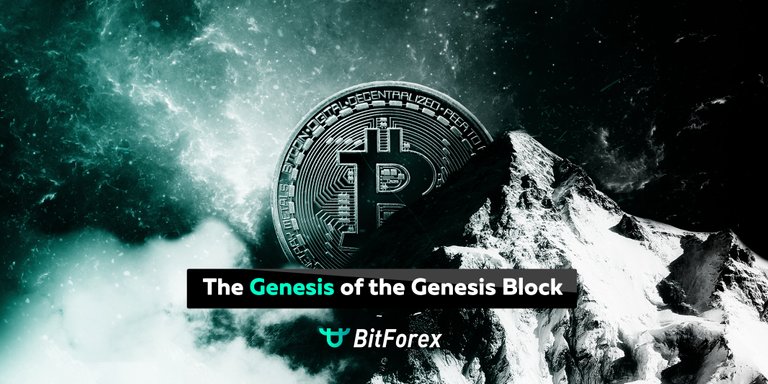
Once upon a time, the mysterious Satoshi Nakamoto, a name used by either a team of brilliant programmers or a single cypherpunk, wrought fundamental change throughout society by inventing an innovative payment network and a brand-new kind of money, Bitcoin. Change is always good and the only constant, and BTC had a deep impact on various spheres of our lives, transforming a great many things forever. The hidden power of the “cash for the internet” lay not in it’s digital in nature but in the fact that it couldn’t be created out of thin air like fiat currency.
Time passed—eleven years of time, to be exact. This year, crypto enthusiasts will mark the anniversary of the most promising virtual coin in the world.
How Did It All Start?
Here’s a short history: Over a decade ago, Nakamoto registered the domain bitcoin.org. Afterward, he published his famous BTC design paper on Metzdowd.com. Then, on October 31, 2008, the alternative currency officially came into play.
The establishment of the genesis block symbolized the beginning of the longest and most secure proof-of-work chains worldwide. In layman’s terms, it is the ancestor that every other global-reserve currency block can trace its origin back to.
Proudly serving its community, block 0, the genesis block, was discovered through the same hashing algorithm as any other one but with great difficulty. The previous hash had zero value because there were no earlier blocks for reference. Block 0 contained the one and only transaction with an output of 50 BTC to a particularly well-known address. There was only one quirk: those BTC could never be spent.
We are still unsure whether those 50 BTC are unspendable on purpose or by accident. Other outputs are spendable, but it is unclear if the mysterious founder has the private key for this specific address, or if it exists at all.
In theory, there is no real need for a genesis block, but it’s crucial to have a starting point that everyone can trust.
Crypto lovers have welcomed altcoins that have copied the BTC framework using a hardcoded block to give birth to a new chain. Instead of keeping transactions in some sort of central agency, they are completely maintained by the global community in a competitive process called mining. Each block includes a header detailing some information about the block, and the body keeps all the transactions themselves. As these details come in, they simply pile up on top of the current block, waiting to be encased in a block of their own.
Miners confirm transactions, expending an enormous amount of energy and processing power to check the integrity of each and every one. If a miner considers a transaction to be valid, he puts it in the block, which then becomes part of this cutting-edge technology. At the extreme end, it becomes a record of truth, meaning that no one can take the earned money away from you. It’s all yours. The blocks can’t be reversed.
Whoever confirms that all transactions are legitimate and not fraudulent creates an additional block and is rewarded. The operations occurring afterward pile up on the previous block, and the process continues onward forever.
A new block is made about every 10 minutes. Every BTC in circulation right now was created this way—they were all mined. If anybody tried to alter or add or remove a transaction, they would totally alter the Merkel root, which would totally change the hash, and the block would never be confirmed.
Even though no one has ever seen Nakamoto, his personality is so attractive that it inspires users to donate to the BTC network. Many crypto fans have sent a little something to the genesis block’s address, which was designed never to be spent. Meant as a sacrifice or even a token of gratitude for the father of internet cash, the contributions are quite permissible and have no chance of not reaching the address. Today, Nakamoto owns more than $20.5 billion in BTC.
Nakamoto went to great lengths to conceal his identity. After two years of assisting with the development of BTC, the mastermind faded away in 2011, leaving nothing but code and questions behind but taking with him a grand total of 1,000,000 BTC. A slew of articles have been written on who this man might be, and at the top of most lists is Harold Finney.
A long-time cryptographer and cypherpunk, Finney is known for the reusable proof-of-work system that was the first Bitcoin recipient. The man behind the evolution of payment systems is believed to have sent him 10 BTC on January 12, 2009. That was just the beginning.

Ever since, digital gold has been gaining popularity turning into a massive P2P system. Still, there is no proof that Finney is the identity behind the crypto genius. But it doesn’t really matter who Satoshi Nakamoto is. He doesn’t control the code, right?
The cloud of mystery surrounding Nakamoto does not cease there. To avoid speculations about the day BTC launched, he copied a headline on the cover of the British edition of Time. It was strictly symbolic because the message alone singled out the world’s global financial crisis; internet cash was built to solve banking issues.
Reminder: the next BTC halving is expected to take place by May 2020.
One more interesting fact: this brilliant man from cryptographic history named the smallest indivisible units coins and cents, but most users prefer the term “satoshis” in collective homage to the elusive creator.
Another important concept lost by Bitcoiners is the time chain, which is “a tree-shaped structure with a block zero at the root.” However, this phrase was hardly mentioned or referenced between and early 2015. The out-of-fashion time chain is nothing more than blockchain, a term which has reached widespread use today (although it was not reflected in the original code).
Those who have long been dealing with virtual money now have a lump-sum. The soft has debunked the idea that the decentralized P2P payment network facilitating the transition of the scarce digital asset wouldn’t exist without a central body or other “trusted” third parties. A new internet protocol enabling value transmission over a communication channel likewise bearing to the overwhelming number of separate blockchain networks. It is quite a big deal that the most profitable investment network, and the protocol’s offspring is still flourishing today.
The End of Mining Is Just the Beginning of Crypto
Every ten minutes, another 12.5 BTC is mined, and that is how miners get compensated. The more users mine coins, the fewer there are to be found. However, not all have been mined yet, and we expect they won’t be until around 2140.
Once we are out of new BTC to mine, miners will receive some profits from the transactions themselves instead of a block reward. Whether or not that will actually be profitable enough to sustain mining right now, there is no answer. It is a really interesting question to ask, but we don’t think it’s something we should concern ourselves with very much. If you imagine someone 120 years ago pondering the issues of 2020, they would have no real grasp on things at all.
Who knows where we will be in terms of the tech a century from now before we hit the 21 million BTC cap.
Final Words
The first 11 years of BTC’s life have proven to be a mind-blowing success. Worming its way into wider popular culture, a small cypherpunk experiment has turned into monetary insurance with a market capitalization of almost $130 billion.
Let’s see what happens next!
Stay tuned to BitForex!